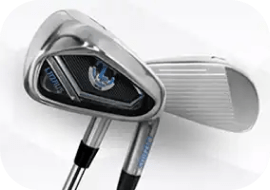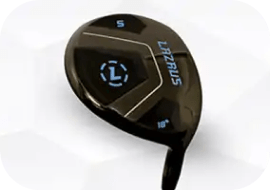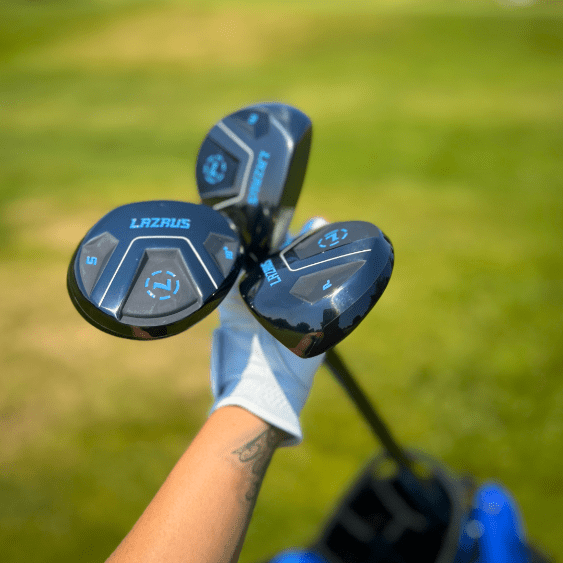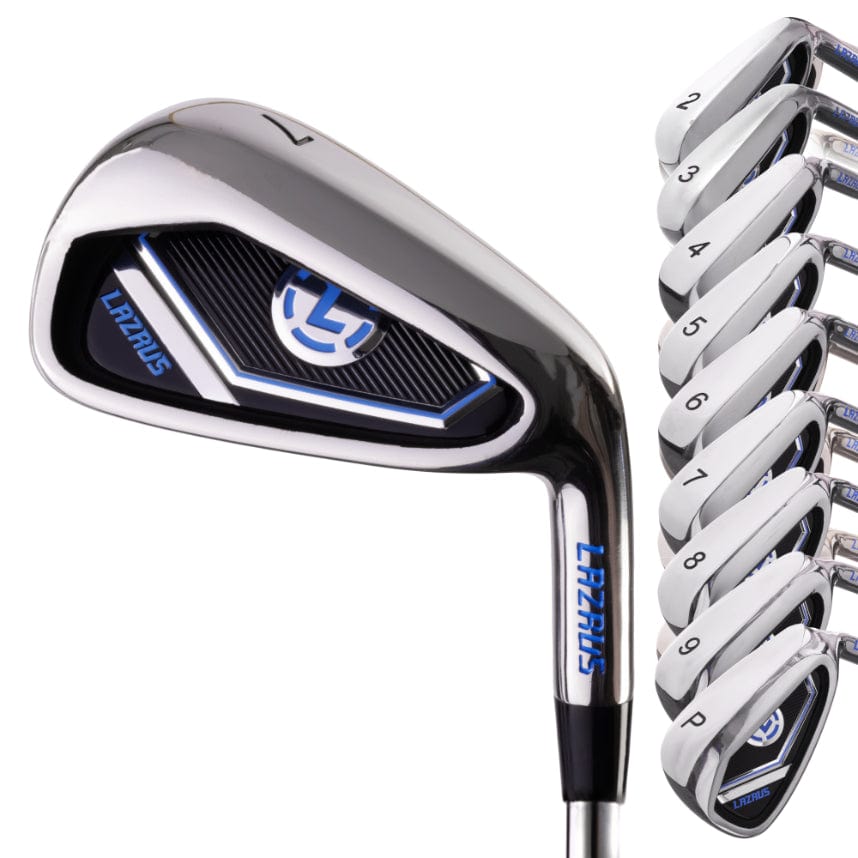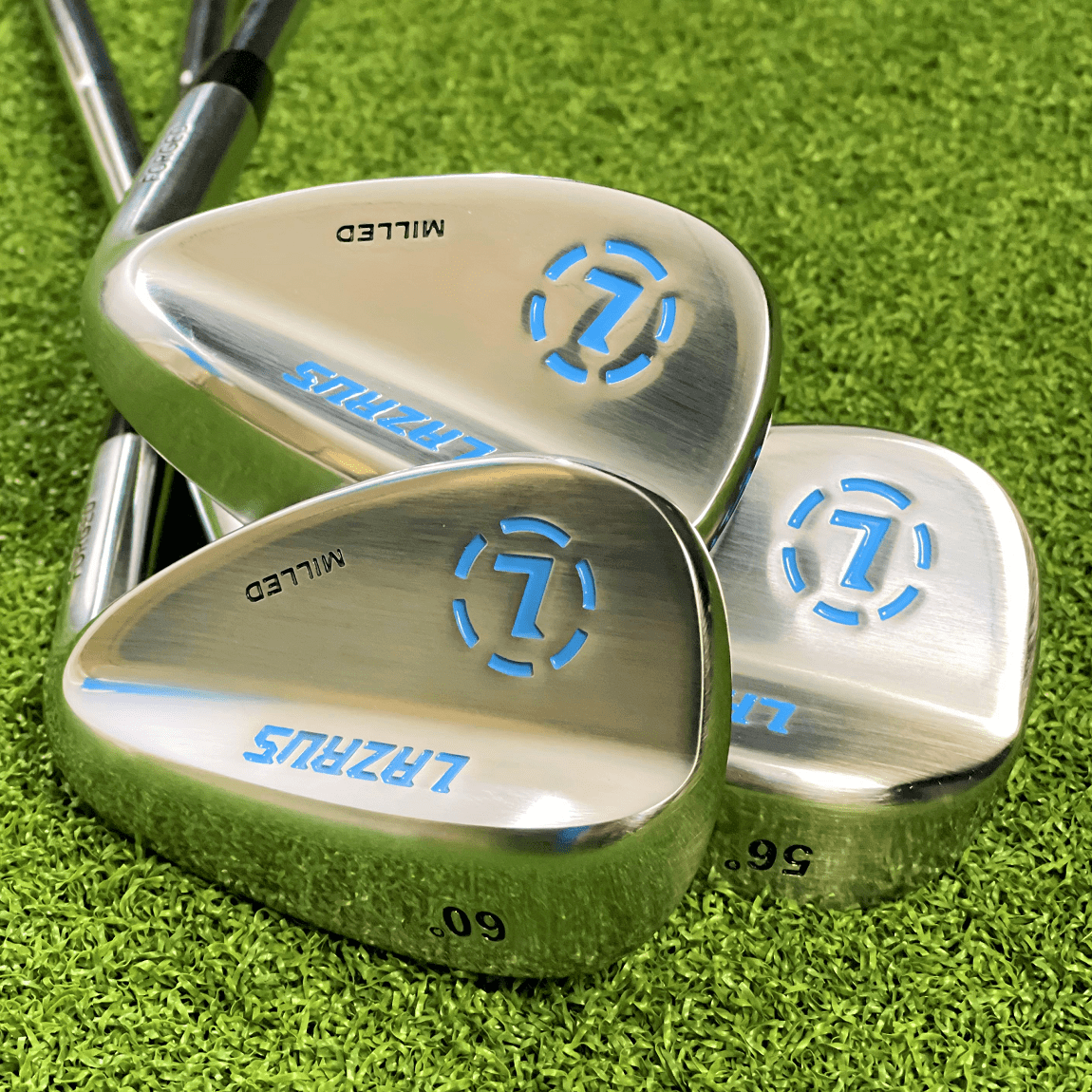Hybrids vs. Fairway Woods Features Comparison Table
| Feature |
Hybrid |
Fairway Wood |
| Design & Structure |
Smaller clubhead, higher loft, shorter shaft |
Larger clubhead, lower loft, longer shaft |
| Distance |
Less distance, easier to control |
More distance, challenging to control |
| Forgiveness |
More forgiving, easier to launch |
Less forgiving, requires precise strike |
| Versatility |
Excellent from various lies, including rough |
Primarily for long shots from fairway or tee |
| Ideal for |
Beginners, high handicappers, versatility |
Experienced golfers, long courses, distance |
Design and Structure
The fundamental differences between hybrids and fairway woods begin with their physical construction and design philosophy. Fairway woods feature larger, more rounded clubheads with longer shafts that promote a sweeping swing motion. This design maximizes clubhead speed and creates the conditions necessary for achieving more distance, particularly appealing to golfers who prefer fairway woods for their power potential.
Hybrid construction utilizes advanced materials including titanium faces, carbon fiber crowns, and tungsten weighting to optimize the center of gravity. The shorter shaft length (typically 1-2 inches shorter than comparable fairway woods) provides better control and more consistent contact. The clubhead shape resembles a smaller wood but with the sole design of an iron, allowing it to cut through turf more effectively than traditional fairway woods.
Swing mechanics differ significantly between these club types. Hybrids encourage a more descending blow similar to iron play, while fairway woods require a sweeping motion that catches the ball at the bottom of the swing arc. This difference affects not only how you hit fairway woods versus hybrids but also which situations favor each club type.
Distance
Distance capabilities represent a primary differentiator when comparing hybrids and fairway woods. Fairway woods generally provide more distance due to their lower loft angles, longer shafts, and larger clubheads that generate higher ball speeds. However, distance means little without consistency and accuracy.
| Club Type |
Avg. Distance (Men) |
Avg. Distance (Women) |
| 3-Hybrid |
180–210 yards |
150–170 yards |
| 5-Wood |
190–220 yards |
160–180 yards |
While fairway woods offer superior distance potential, hybrids provide more consistent distance control. The shorter shaft and higher loft of hybrids make them easier to square at impact, resulting in more predictable yardages. This consistency proves especially valuable for amateur golfers who prioritize accuracy over maximum distance.
Swing speed significantly influences these distance comparisons. Golfers with faster swing speeds can fully utilize fairway woods' distance advantages, while those with slower swing speeds often achieve better results with hybrids due to their easier launch characteristics and more forgiving design.
Forgiveness
Forgiveness represents perhaps the most crucial factor for most golfers when choosing between these club types. Hybrids offer superior forgiveness through several design elements: larger sweet spots relative to their size, lower centers of gravity, and perimeter weighting that reduces the penalty for off-center strikes.
The upright lie angle of hybrid golf clubs naturally promotes better accuracy by helping square the clubface at impact. This design feature particularly benefits golfers who struggle with slice tendencies, as the upright lie angle helps close the face through impact. Additionally, the higher loft angles make it easier to achieve proper launch conditions without perfect technique.
Fairway woods require more precise striking, especially when hitting from the turf rather than a tee. The larger clubhead can be deceiving, as the effective sweet spot is proportionally smaller than hybrids. Solid contact becomes more critical with fairway woods, making them less suitable for inconsistent ball-strikers or beginners still developing their swing mechanics.
Versatility
Hybrid versatility extends far beyond what fairway woods can offer in challenging situations. These clubs excel from tight lies, thick rough, fairway bunkers, and even around the greens for specialized shots. The smaller clubhead and iron-like sole design allow hybrids to cut through various turf conditions that would grab and slow down larger fairway woods.
From fairway bunkers, hybrids provide a significant advantage due to their ability to dig through sand while still achieving reasonable distance and trajectory. Many golfers find hybrids useful for punch shots under tree branches or in windy conditions where a lower, more controlled ball flight proves beneficial.
Fairway woods perform best from clean lies on the fairway or teed up, where their sweeping swing motion and low-loft design can maximize distance potential. They struggle significantly from rough or uneven lies, where the larger clubhead tends to get caught in the grass before reaching the ball.
Ideal for
Club selection should align with your skill level, physical capabilities, and typical playing conditions. Hybrids suit beginners and high-handicap golfers who prioritize consistency and forgiveness over maximum distance. They're also ideal for players with slower swing speeds who struggle to generate sufficient clubhead speed to effectively use fairway woods.
Golfers who prefer fairway woods typically possess faster swing speeds, more consistent ball-striking ability, and play courses where distance advantages outweigh versatility concerns. These players can reliably hit fairway woods from good lies and appreciate the extra yardage these clubs provide for long approaches and par-5 second shots.
Pros and Cons of the Fairway Wood
Pros
Fairway woods excel at delivering maximum distance for golfers who can consistently make solid contact. Their penetrating ball flight cuts through wind effectively, making them valuable for courses with challenging weather conditions. The larger clubhead provides confidence for many golfers, particularly when hitting from teed positions on narrow holes where accuracy matters more than pure distance.
The sweeping swing motion required for fairway woods feels natural to golfers who developed their games using traditional methods. This familiar feel can boost confidence and lead to better results for players comfortable with the wood swing technique. Additionally, fairway woods often provide better distance control than drivers while offering significantly more length than mid-irons.
Cons
The primary drawback of fairway woods lies in their difficulty from challenging lies, particularly rough or uneven surfaces. The larger clubhead and lower loft require precise contact to achieve optimal results, making them less forgiving for inconsistent ball-strikers. Players with slower swing speeds often struggle to generate the clubhead speed necessary to effectively launch fairway woods, especially from tight lies.
Fairway woods also demand better timing and tempo than hybrids, as the longer shaft and sweeping motion require more precise coordination. This complexity can lead to inconsistent results for amateur golfers still developing their swing mechanics or those who play infrequently.
Pros and Cons of the Hybrid
Pros
Hybrid forgiveness makes them invaluable for golfers seeking more consistent results from long-range shots. The easier launch characteristics help players achieve proper trajectory without perfect technique, while the versatility allows confident play from various lies around the golf course. Hybrid golf clubs for women's players particularly benefit from the reduced swing speed requirements and improved launch conditions.
The iron-like setup and swing feel familiar to most golfers, reducing the learning curve compared to mastering fairway woods. This familiarity often leads to faster improvement and more confidence during rounds, as players can apply their existing iron swing knowledge to hybrid play.
Cons
Distance limitations represent the primary compromise when choosing hybrids over fairway woods. While the difference may only be 10-20 yards, this gap can prove significant on longer courses or when facing lengthy approach shots. Some golfers also find the higher trajectory less suitable for windy conditions or when seeking maximum roll after landing.
Players who prefer a sweeping swing motion may find hybrids feel restrictive or uncomfortable, as the design encourages a more descending blow similar to iron play. This swing difference can create inconsistency for golfers comfortable with traditional wood techniques.
Hitting a Hybrid vs. Hitting a Fairway Wood
The fundamental difference in hitting technique significantly impacts success with each club type. Hybrid shots require an iron-like approach with ball position slightly back of center and a descending blow that takes a small divot after contact. This technique works effectively from various lies and feels natural to golfers comfortable with iron play.
Fairway wood shots demand a sweeping motion with the ball positioned forward in the stance, similar to driver technique but with less extreme positioning. The goal is to catch the ball at the bottom of the swing arc or slightly on the upswing, avoiding any downward strike that could result in poor contact or loss of distance.
Practice requirements differ significantly between these clubs. Hybrids typically require less specialized practice time due to their forgiving nature and familiar swing mechanics. Fairway woods benefit from dedicated practice sessions focusing on proper setup, ball position, and swing tempo to achieve consistent results.
Fairway Woods vs. Hybrids: Which Is Right for You?
Selecting the right club for your golf game requires honest assessment of your swing speed, skill level, and typical course conditions. While some golfers benefit from carrying both club types, most amateur golfers must prioritize one based on their individual strengths and weaknesses. The following scenarios help identify which club type will provide the greatest improvement to your overall performance and scoring consistency.
When to Use Fairway Woods
Fairway woods prove most valuable for long par-5 second shots where maximum distance helps set up easier approaches to the green. Their low trajectory and distance capabilities make them ideal for reaching distant targets from good lies. Many golfers prefer fairway woods for tee shots on tight par-4 holes where driver accuracy concerns outweigh pure distance needs.
The penetrating ball flight of fairway woods excels in windy conditions, cutting through headwinds more effectively than higher-lofted alternatives. This characteristic makes them valuable for links-style courses or areas with consistent wind patterns that challenge higher-flying shots.
When to Use Hybrid
Hybrid situations include any shot from rough, where the club's ability to cut through grass provides significant advantages over fairway woods. Long approach shots into elevated greens benefit from hybrid trajectory and stopping power, while fairway bunker shots become more manageable with hybrid forgiveness and launch characteristics.
The versatility of hybrids makes them excellent for replacing traditional long irons that many amateur golfers find difficult to hit consistently. This replacement strategy simplifies the golf bag while improving performance from 150-200 yard distances that frequently occur during rounds.
Tip: "If you struggle with long irons or inconsistent contact, a hybrid is likely your best friend on the course."





